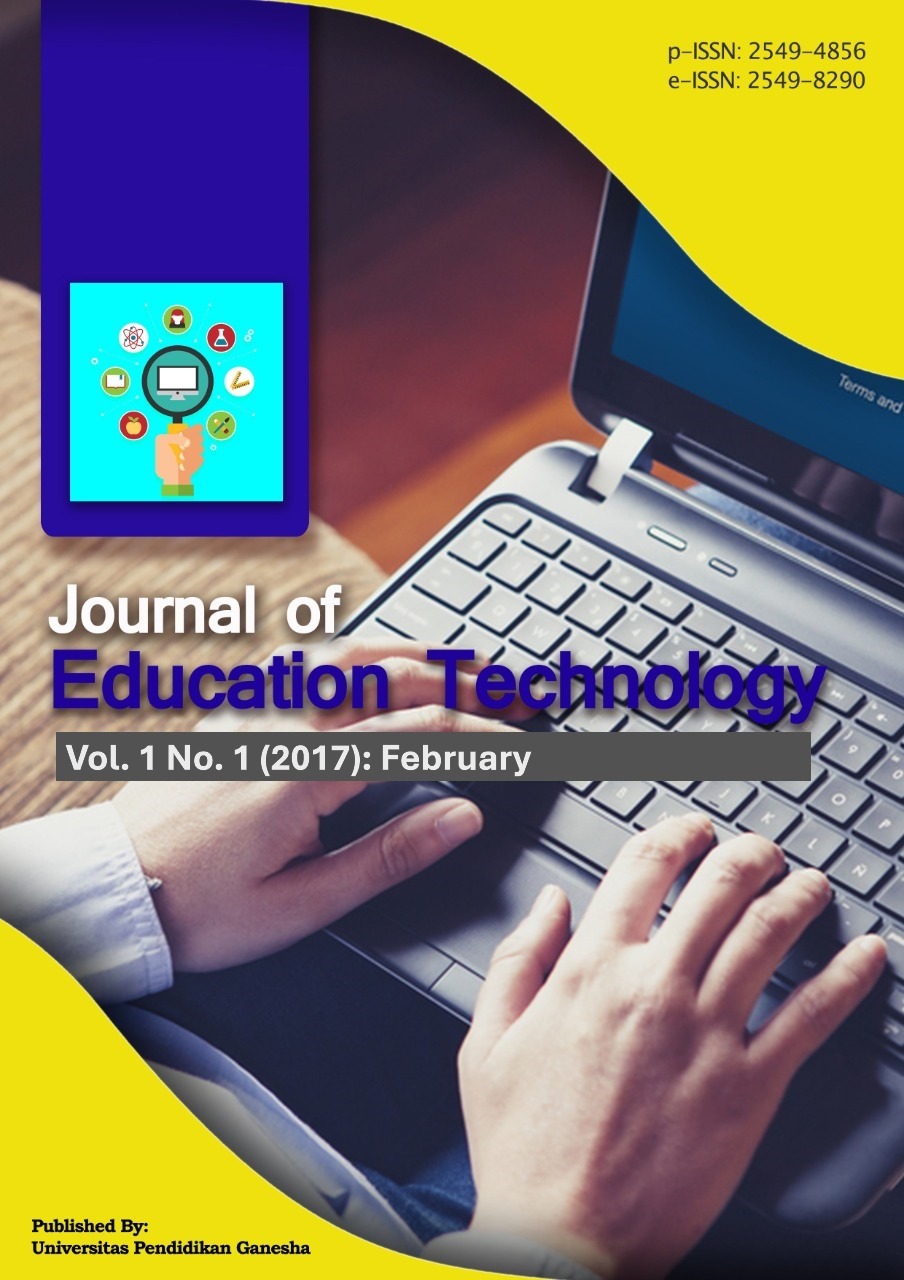APPLICATION OF CRITICAL DISCOURSE ANALYSIS (CDA) METHODS TO IMPROVE THE ABILITY OF STUDENTS UNDERSTAND DESCRIPTIVE TEXT
DOI:
https://doi.org/10.23887/jet.v1i1.10085Keywords:
Critical Discourse Analysis method, descriptive textAbstract
The present classroom action research aimed to (1) determine the critical discourse analysis method to improve the seventh E grade students of SMP Negeri 1 Susut in comprehending descriptive text, (2) determine the syntaxes of the critical discourse analysis method to improve the seventh E grade students of SMP Negeri 1 Susut in comprehending descriptive text,, (3) determine the responses of the seventh E grade students of SMP Negeri 1 Susut in comprehending descriptive text during the application critical discourse analysis method. The type of the present research is the Classroom Action Based Research (CAR). The subjects were VIIE grade students of SMP Negeri 1 Susut that consist of 33 people. Data collection methods used in this research are the method of observation, tests and questionnaires (questionnaire). Data were analyzed using two (2) analysis model, namely qualitative and quantitative descriptive analysis. The result of this study is the Application of Critical Discourse Analysis (CDA) can improve the ability to understand the descriptive text at seventh E grade students of SMP Negeri 1 Susut in the academic year 2015/2016. It can be seen from the students' ability to understand the text from the intial data to the first cycle with an average yield of 17,55 and from the first cycle to the second cycle increase in average yield of 14,64. In accordance with these findings suggested, results of this research can be considered to conduct the study with the same study and deeper.
References
Arikunto. 2005. Manajemen penelitian. Jakarta: Rineka Cipta.
Dirman dan Cicih Juarsih. 2014. Teori Belajar dan Prinsip-Prinsip Pembelajaran yang Mendidik. Jakarta: Rineka Cipta.
Eriyanto.2001. Analisis Wacana Pengantar Analisis Teks Media.Yogyakarta: PT LKis Pelangi Aksara.
Kurniasih, Imas dan Berlin Sani. 2014. Sukses Mengimplementasikan Kurikulum 2013 Memahami Beragai Aspek dalam Kurikulum 2013. Jaktim: Kata Pena.
Koyan, I Wayan. 2012. Statistik Pendidikan Teknik Analisis Data Kuantitatif. Singaraja: Universitas Pendidikan Ganesha Pers.
Rosidi, Sakhban. 2007. “Analisis wacana kritis sebagai ragam paradigma kajian wacana”Makalah disajikan pada Sekolah Bahasa atas prakarsa Himpunan Mahasiswa Islam Komisariat Universitas Islam Negeri (UIN) Malang, 15 Desember 2007.
Riyanto, Yatim. 2012. Paradigma Baru Pembelajaran: Sebagai referensi bagi pendidik dalam Implementasi Pembelajaran yang Efektif dan Berkualitas. Jakarta: Kencana
Sumiati dan Asra. 2007. Metode Pembelajaran. Bandung: CV Wacana Prima.
Trianto. 2009. Mendesain Model Pembelajaran Inovatif-Progresif. Jakarta: Kencana.
Downloads
Published
How to Cite
Issue
Section
License
Authors who publish with the Journal of Education Technology agree to the following terms:
- Authors retain copyright and grant the journal the right of first publication with the work simultaneously licensed under a Creative Commons Attribution License (CC BY-SA 4.0) that allows others to share the work with an acknowledgment of the work's authorship and initial publication in this journal.
- Authors are able to enter into separate, additional contractual arrangements for the non-exclusive distribution of the journal's published version of the work (e.g., post it to an institutional repository or publish it in a book), with an acknowledgment of its initial publication in this journal.
- Authors are permitted and encouraged to post their work online (e.g., in institutional repositories or on their website) prior to and during the submission process, as it can lead to productive exchanges, as well as earlier and greater citation of published work. (See The Effect of Open Access)
















